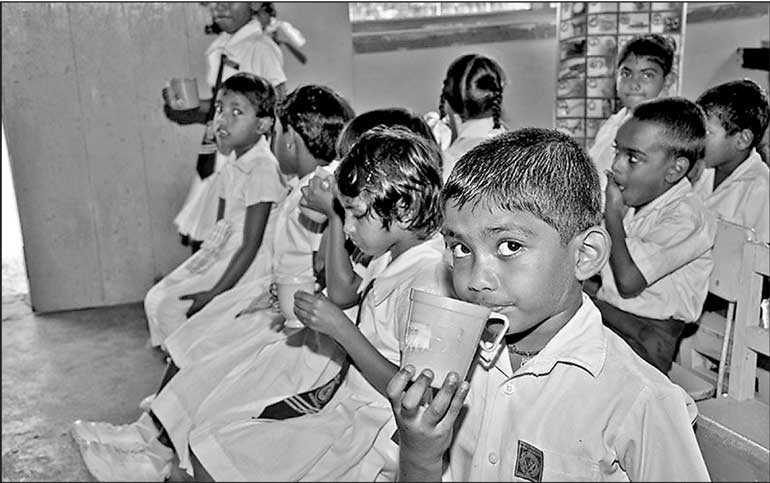Saturday Dec 13, 2025
Saturday Dec 13, 2025
Saturday, 22 June 2019 00:00 - - {{hitsCtrl.values.hits}}

By G.H.M. Amarasinghe
A yearly amount of Rs. 6.7 billion would be spent to provide liquid milk for schoolchildren under President Maithripala Sirisena’s concept of ‘nutritious young generation of a nation bountiful with milk’.
This national program conducted by the ‘Grama Shakthi’ people’s movement aims to provide a pack of milk to school children from a selected set of schools while this program has targeted a total of 1.7 million school children.
With one pack of milk valued at Rs. 21, an estimated amount of Rs. 6.7 billion would be spent on the selected 1.7 million school children per year.
While this program certainly improves the nutritious status of the school children, it could also be considered as a stepping stone to promote liquid milk instead of milk powder.
In fact Sri Lanka tends to import milk powder from New Zealand and Australia despite these two countries rarely consuming milk powder.
President Maithripala Sirisena however, is certainly not a big fan of milk powder and made it very clear that Sri Lanka should consume liquid milk.
“No matter who says what, powdered milk is not suitable for human consumption. These are made by multinational companies. When I say these things, they will get angry with me. Everyone is angry with me these days; drug barons, tobacco companies, fraudulent pharmaceutical companies. They are all upset with me. But no matter who gets angry with me, these things must be said. For a country to develop, local milk production must increase,” the President said earlier this year.
“When I was going to school, when I was about 15 years old, we had milk from the cow that was brought up at home. When we woke up, I used to take a tin and milk the cow. We used to refer to the cow as ‘milk mother’. It was only after I milked the cow and handed over the tin to my mother that I would go to school. If we work according to the whims of these milk powder companies, then that is wrong. I was Health Minister for five years and representatives of milk powder companies came after me then, but I never allowed them to come even inside the gate of my home. I never allowed them to come to my Ministry. That was how I worked,” added the President.
Ministry of Education, Ministry of Agriculture, Ministry of Health, Nutrition and Indigenous Medicine, Ministry of Fisheries and Aquatic Resources Development and Rural Economic Affairs have also joined hands in order to make this program a success while one of the main targets of this program is to make Sri Lanka self-sufficient in liquid milk by 2025.
In addition to that a few companies from the private sector have also played a part in this program in order to provide milk packs to school children. Milco has taken the major share of the packaging and distribution of milk packets while Cargills has also gotten involved in this.
The dairy industry in Sri Lanka however, doesn’t seem to produce enough liquid milk at the moment. In fact at present the dairy industry produces around 900,000 litres but still there is less demand; this program alone requires a total of 250,000 litres in order to cover the primary section of each and every school despite Milco Ltd. producing a total of 300,000 litres on a daily basis. However, it is believed that this particular program could earn a resounding demand for liquid milk as well as for the dairy industry.